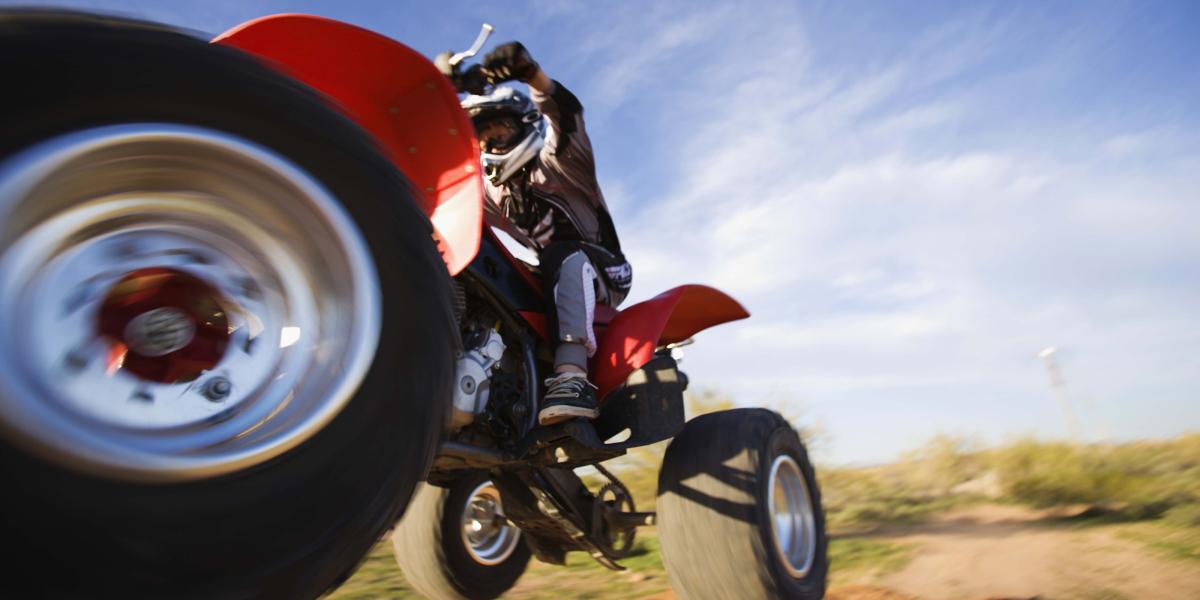Kids and ATVs: A Dangerous Combination
Racing and bouncing through open country atop a growling 600-pound beast offers a basic, perhaps primal sort of thrill. That probably explains the explosive popularity of all-terrain vehicles (ATVs) in America over the last four decades—which has brought with it an explosive rise in ATV-linked deaths and injuries, even among children.
“From 1997 to 2006, the number of children hospitalized with ATV injuries rose from 1,618 to 4,039,” says Stephen M. Bowman, PhD, MHA, an assistant professor in Health Policy and Management, and lead author of a recent study in the Journal of Trauma: Injury, Infection, and Critical Care. “Four thousand hospitalized kids is a lot, and a third of them had traumatic brain injuries. Something should be done about this.”
Something was done about this in the 1980s, when thrill riding on ATVs first caught on in the U.S., and accident numbers rose sharply. The federal Consumer Product Safety Commission got ATV makers to agree, in 1988, to a set of injury-reducing measures—from a U.S. ban on selling new three-wheeled ATVs, which are even less stable than four-wheelers, to a prominent warning to buyers not to allow young children to operate the ATVs that were sold. Most of those measures have remained voluntarily in place since that “consent decree” expired in 1998. Yet the enthusiasm for ATVs seems to be growing, and annual ATV crash deaths among children have been averaging double what they were in the 1990s.
In the late 2000s, Bowman was on the faculty at the University of Arkansas for Medical Sciences. “We frequently heard anecdotal reports of increases in serious ATV-related injuries, especially to children,” he remembers. “That prompted my interest in doing research in this area.”
With his University of Arkansas colleague Mary Aitken, MD, MPH, a pediatrician and public health expert, Bowman began to study national data.
In an initial study, published in 2009 in Injury Prevention, they and their colleagues determined that severe brain injuries happened to unhelmeted ATV riders almost three times as often as to helmeted riders—and fatal brain injuries occurred about two and a half times as often. “For motorcycles, helmet laws are the norm in many states, but for ATVs, very few such laws are in place,” says Bowman, now a faculty member of the Center for Injury Research and Policy at the Bloomberg School. The strikingly high proportion of children among these brain-injury cases prompted Bowman and Aitken to follow up with the recent child-hospitalization study.
The question of what to do about all of this remains. “Many ATVs are driven on private land and in very isolated settings, so there’s the issue of who would have the resources and the will to enforce new laws restricting their use,” says Aitken, who did her pediatric internship and residency at Johns Hopkins Hospital in 1988–91. “Perhaps the most important factor is the very low level of awareness among parents about the dangers of ATVs, particularly for kids; in many areas, owning and riding an ATV is very much the norm and is not really considered risky; so I think there’s going to have to be some awareness building along with any new laws.”
